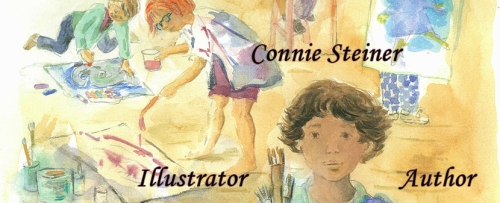
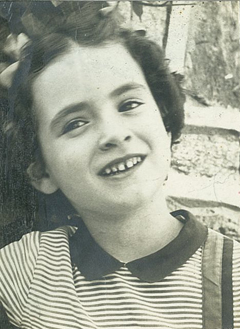 Born in Philadelphia, Connie Colker Steiner graduated from the Pennsylvania Academy of the Fine Arts and the University of Pennsylvania. For many years she lived in Winnipeg where she contributed verse and artwork to Canadian Sesame Street. The words were set to music and the pictures shown sequentially. These vignettes were aired across the U.S. and Canada and around the world. She is the author and/or illustrator of several children’s picture books, including On Eagles’ Wings and Other Things, Paul’s New Ears, In Other Words and the award-winning Shoes for Amelie. Connie and her husband, Mark, now reside in southern New Jersey.
Born in Philadelphia, Connie Colker Steiner graduated from the Pennsylvania Academy of the Fine Arts and the University of Pennsylvania. For many years she lived in Winnipeg where she contributed verse and artwork to Canadian Sesame Street. The words were set to music and the pictures shown sequentially. These vignettes were aired across the U.S. and Canada and around the world. She is the author and/or illustrator of several children’s picture books, including On Eagles’ Wings and Other Things, Paul’s New Ears, In Other Words and the award-winning Shoes for Amelie. Connie and her husband, Mark, now reside in southern New Jersey.
Here is Connie explaining her process:

This was for a magazine. I started out with a sketch and block were the text will be.

Then I used color pencils to try out the colors.
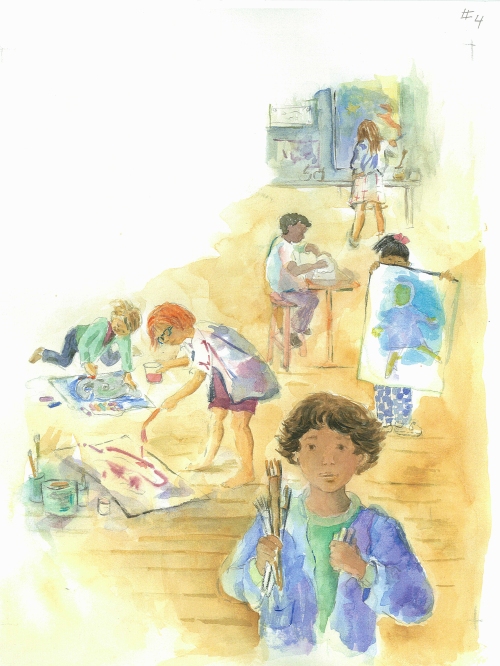
Here is the final illustration done in watercolor.
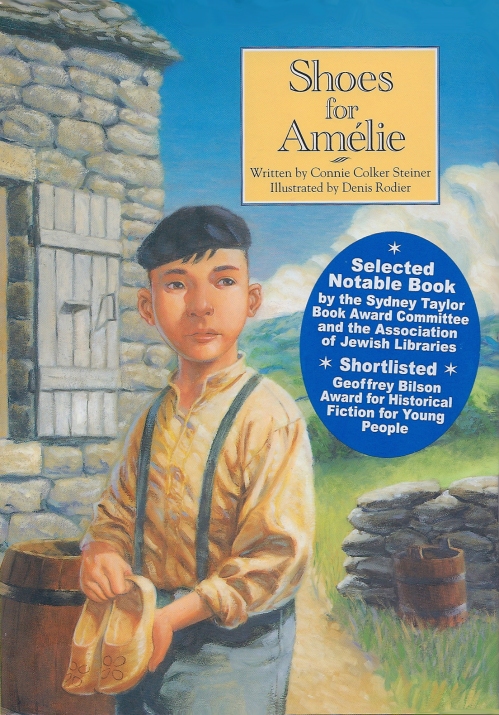
This is the cover of Shoes for Amelie. You will read more about this during the interview.
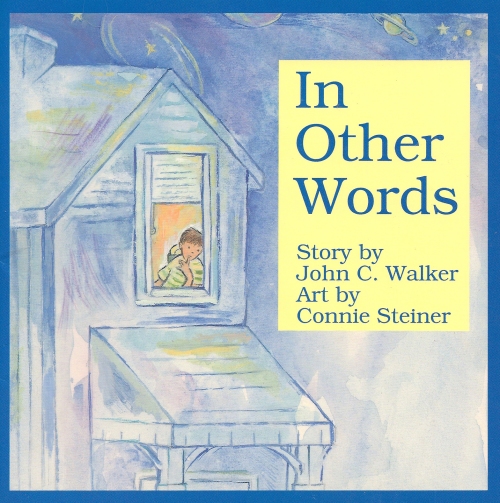
The cover of In Other Words. More about this book in the interview.
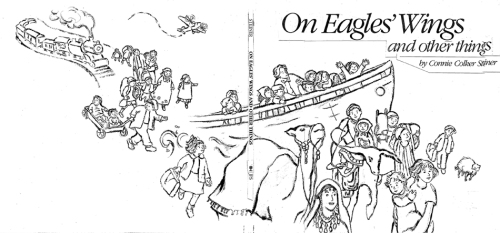
Sketch of “On Eagle Wings” book cover.
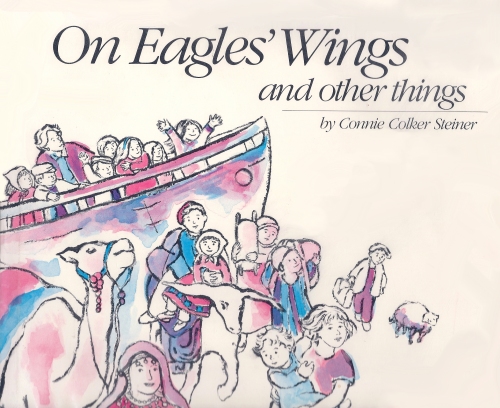
Final Cover of On Eagle Wings. Below is the cover of Paul’s New Ears.
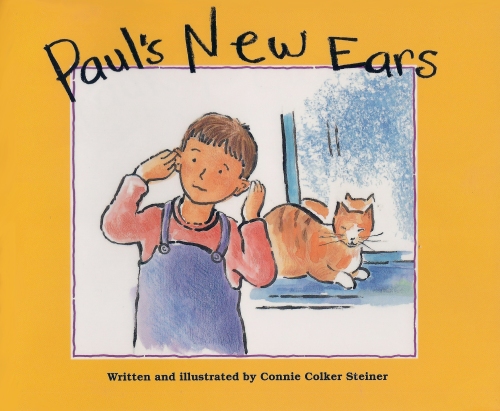
When did you first know you wanted to create art?
I don’t remember a time when mark-making, drawing, a little later painting, wasn’t a big part of life. The other children and the adults around me kind of assumed that that’s what I was going to do, and I didn’t disagree.
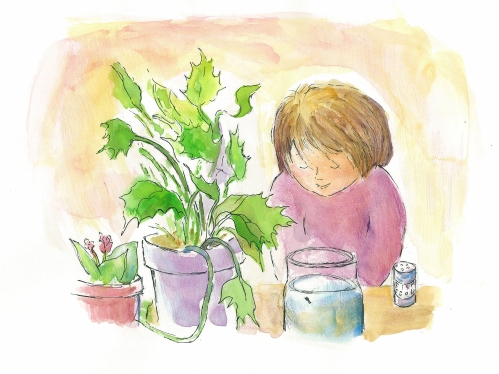
How long have you been illustrating?
People in action fascinated me. The people that filled the sheets of shelf paper my mother provided were usually children. I also liked drawing mothers and babies. The mothers were tall with alarming bumps on the fronts of their chests, high heels on their feet and stockings held up by garters. (I wish I could find these.) The children were usually whatever age I was when I was drawing them. They got older as I got older, and were often involved in ongoing narratives. Some stories came from books or other outside sources. Others I was concocting as I went along – little private soap operas populated by juveniles. You could call this proto- illustration and it was in full swing by kindergarten.
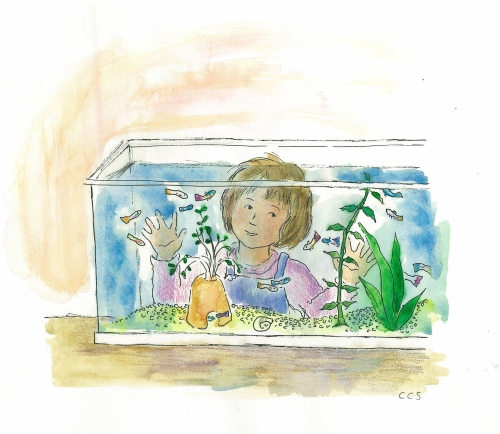
What was the first thing you did where someone paid you for your artwork?
Canadian Sesame Street was the first place that paid me for artwork. I was thirty-one.
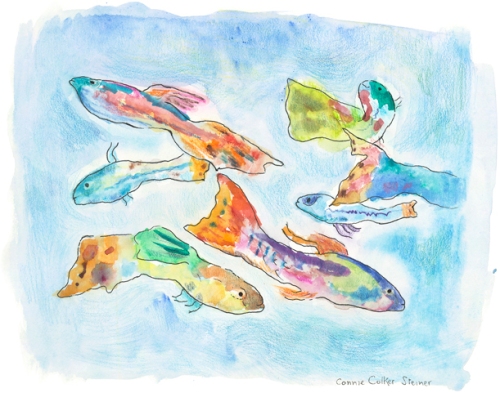
I see that you attended Tyler Art College in Philadelphia, PA, but then left for the Pennsylvania Academy of the Fine Arts and then the University of Pennsylvania. What made you attend three schools?
Tyler, Temple University’s art school had a design orientation. I needed the atmosphere of an atelier and found it in the Pennsylvania Academy of Fine Arts. As for the University of Pennsylvania, I didn’t decide to go to a third school. The Academy awarded diplomas but not college degrees. They set up a program with Penn for those of their students who wanted, and were willing to work for, a BFA.
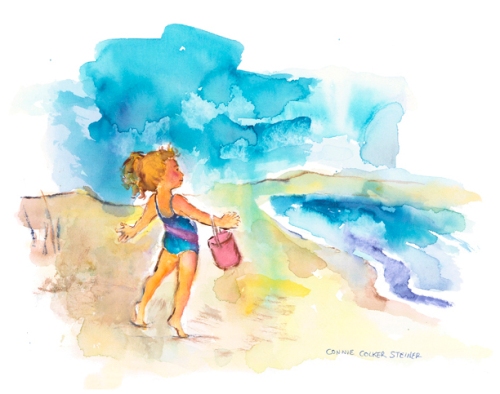 What types of classes did you like the most?
What types of classes did you like the most?
After the first year, students could choose whether their major would be painting, sculpture or printmaking. If you were a painting major, as I was, you painted every day for half the day, in oil or acrylics, portrait, nude or still life. The other half of the day was spent drawing the nude in charcoal. (Everyone, no matter what the major was, drew for half the day.) I had two very inspiring drawing teachers. One was Marshall Glazier, who could start with a big toe, and by getting the relationships – the angles, the spaces between, just right – would wind up with a completely convincing figure, done entirely in line, with no shading. The other was George Sklar. His marvelous, swift, Zen-like drawings of animals at the Philadelphia Zoo can still be found in books that collect great drawings. Mr. Glazier emphasized line. Mr. Sklar had us trying to capture the solidity of the forms through tones of charcoal that were darkest on the frontal planes and got lighter going back. Neither was an “academic” sort of teacher. Their classrooms produced a fusion of freedom, intensity and varieties of expression. At graduation I won the George Sklar Prize for Life Drawing, named in honor of his memory.
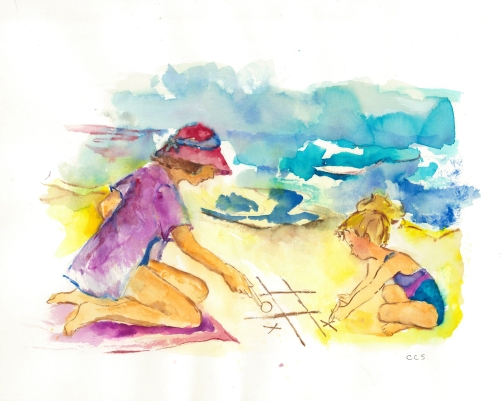
Did the School help you get work?
No. A few mature and advanced students were mentored with an eye to the galleries. But it wasn’t part of the program to offer career advice, and most of the young, naïve student body didn’t presume to ask. A few were wise and committed enough to go on for their MFAs, or to New York for the support and stimulation of a critical mass of artists.
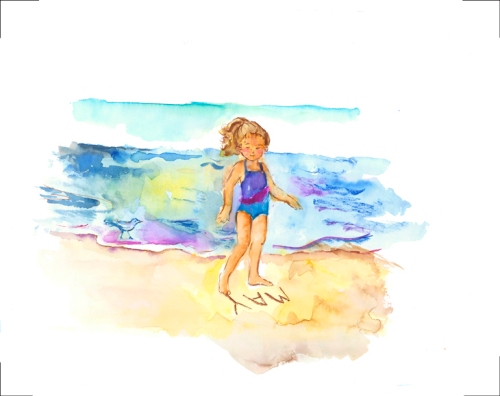
7. Do you feel that the classes you took in college have influenced you style?
Individual teachers, such as the painter Hobson Pittman, encouraged the painterliness that was natural to me, and also my sympathetic feeling for subject matter. I learned to look longer and see better and developed a conscious appreciation of abstract qualities. Not least important, there was an atmosphere of connection to the great art of the past. So yes, I hope these experiences influenced my illustration style, although I’m aware that illustration can have quite different goals from non-illustrative painting. But as for the figures of children in my storybook pictures, they have roots that precede art school and are only partly affected by my education.

How did you find your first art related job?
My first art related job, at seventeen, was teaching the children of my parents’ friends in our finished basement. That took a little nerve, now that I think about it. It was my mother’s idea. Maybe she wanted to make sure I knew how to do something. During art school I sold art supplies at Gimbels department store and was an art counselor at summer camp.
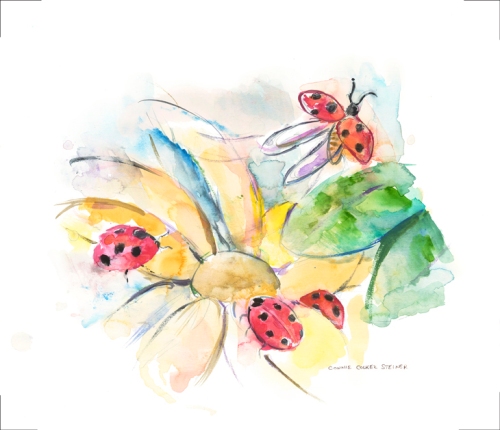
What made you decide that you wanted to illustrate for children?
Somehow I always thought of doing it.
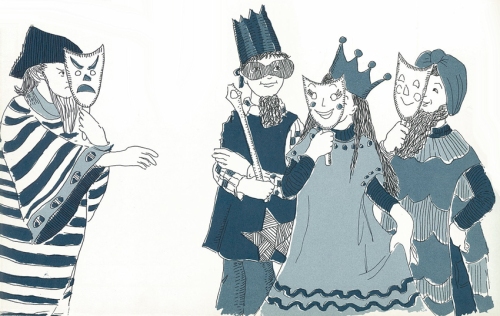
What was the first illustration work you did for children? How did that come about?
My first professional illustration work was with Sesame Street. As for how that came about look ahead to (See four answers down).
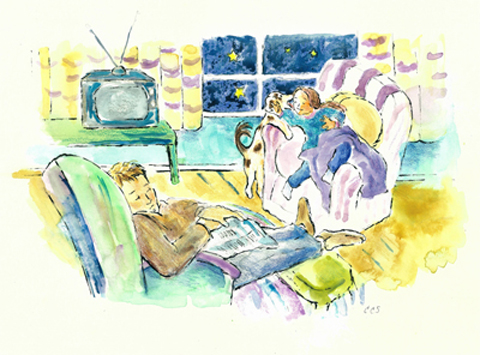
What was your first picture book published?
My first picture book, “On Eagles’ Wings and Other Things”, was published in 1987. (The Dark Ages!)
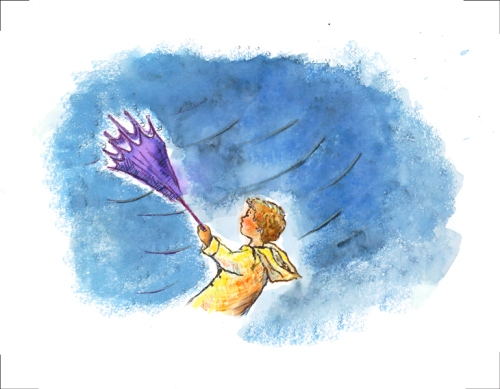
How did that come about? What made you decide to write and illustrate that book?
I had taken my portfolio to NYC two years before. David Adler, author of the Cam Jensen series, was Children’s Book editor of the Jewish Publication Society at that time. This was my very first appointment with anyone in publishing and he wanted to get me started on a picture book. Talk about beginner’s luck. He suggested that I look at picture books of general interest and model my efforts on something that could be adapted to the needs of his company. I chose “The Philharmonic Gets Dressed” by Karla Kuskin. It followed the members of the NY Philharmonic as they washed, dressed, and transported themselves and their instruments from all points in the city to converge on the concert stage. I thought about the Jewish children who had travelled from widely dispersed places throughout the world to the new State of Israel soon after its rebirth. Instead of coming together on a stage like the musicians, they would find themselves together at last in a Jerusalem playground. Influenced by the many characters in the Kuskin story, I imagined a dozen children. David Adler swiftly pared it down to six, then four. The story of each child was complicated compared to performers getting dressed and taking the subway or the taxi. In the end , “Eagles’ Wings” was a very different book from the one that inspired it.
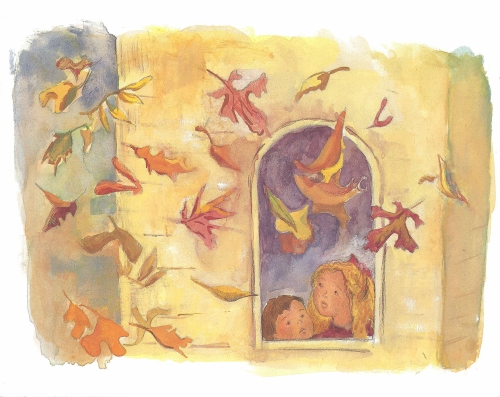
How did you end up working for Canadian Sesame Street?
Having moved to Winnipeg with my family in 1980, I learned that Sesame Street maintained an office downtown in the CBC building. This was a show my children and I watched together. Was it possible that I might contribute to it? I phoned, they agreed to look at my work, and seemed to like what they saw. However, they were only looking for a writer. Would I be willing to come up with a few lines and some sketches their animators could develop? Sure, why not. Several weeks later I handed in a French verse about dancing, along with pencil sketches of a little girl in tights and leotard. Eventually it was on TV – my words set to music, accompanied by my own watercolor illustrations shown as stills. This was the first of seventeen vignettes I would do for them over a fifteen year period.
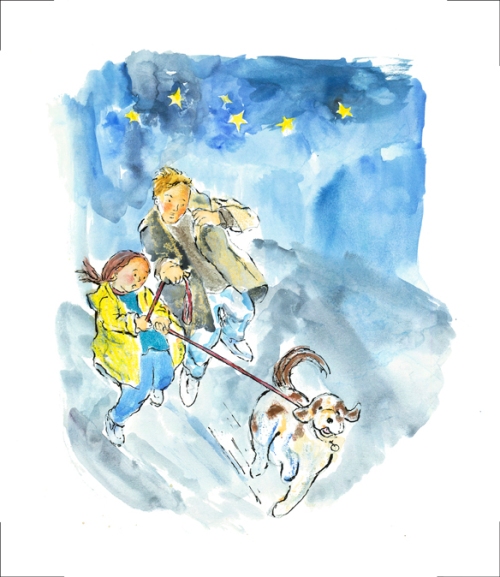
What made you move to Canada?
My husband, Mark, accepted a job as a Reading Clinician with the Child Guidance Clinic in Winnipeg. In those years they hadn’t enough homegrown specialists. For us it was an adventure. I’d never been to Canada, or west of Pittsburgh.
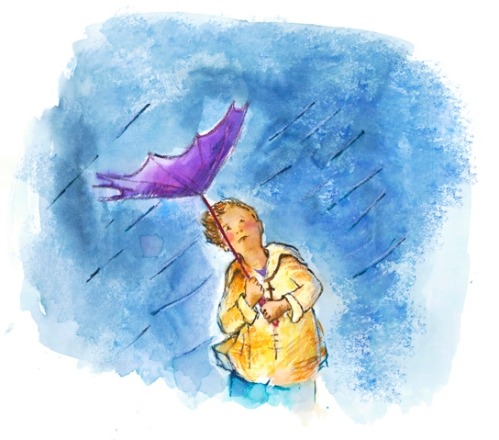
When and why did you move back to the States?
Paradoxically, living in Canada increased my awareness of America, my interest in the culture and history of my original country. From above I could see it whole and put myself in the shoes of observers who were almost totally indistinguishable from Americans but weren’t Americans. There’s a saying – to see ourselves as others see us. Even after becoming dual citizens in 1995, I felt myself to be an American in Canada. Never mind that in summer our cousins called our family “the Canadians”. And we did come home to New Jersey every summer so our children could go on the beach and watch the Fourth of July fireworks with their grandparents. I didn’t expect to be away forever.
In 1990 my father died. Twelve years later, my mother could not be left alone. Her short term memory was becoming dangerously unreliable. For a year and a half she stayed with us up north. In 2005 we did what seemed the most right thing and brought her back to Margate. The three of us managed together in the family home for the next two years – the rest of her life.
Mark and I had lived in Canada for two and a half decades. We were used to the cold winters and ice that put dents in everyone’s cars, the bundling up, the boots that came off in the “mud rooms” of every home, the good natured, down to earth people, English and French, Ukrainian, Filipino, Native Canadian and more, well mannered in every walk of life. Not to mention parks and ice skating on the river, affordable housing, affordable education, affordable high culture, and universal health care that was better than affordable. Necessary appointments and procedures required no out-of-pocket payments. Winnipeg, its prairie sky and the friends we made there, will stay a part of us.
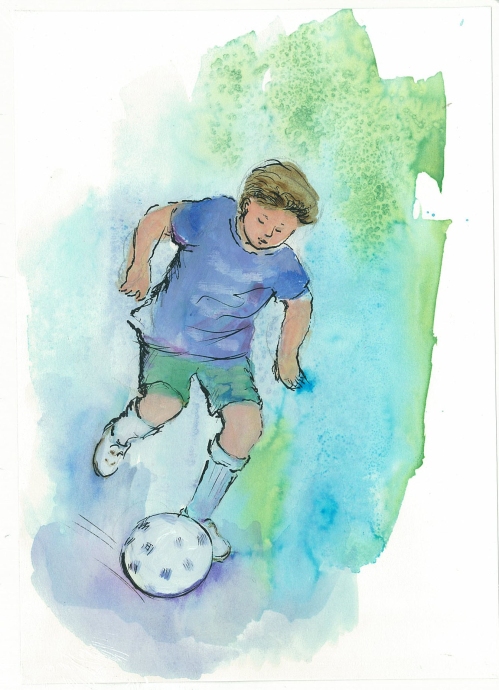
What was your illustrating first success?
That would have to be Sesame Street. The atmosphere at the Winnipeg office was easy and informal. (Although headquarters were in Montreal and Toronto, branches were set up in cities across Canada. I noticed that there was an interest, generally – not just with Sesame Street – in having artists develop in their regions as well as in the greater centers.) I was encouraged by Dave Strang, the art director, the music director who literally made my words sing, I wish I could remember his name, and my wonderful producers, Pat Kent and later Ernie Zuk.
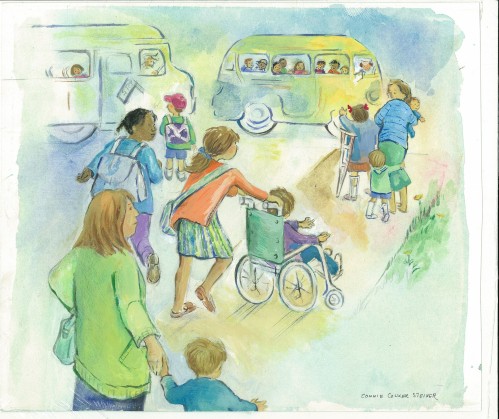
It looks like you wrote and illustrate another picture book, PAULS NEW EARS. Can you tell us how you came up with the story and how you found a publisher?
I wrote a poem for the CBC about my son who, as a first grader, was upset by a haircut that revealed his previously camouflaged ears. His ears weren’t unusual. He just wasn’t used to seeing them. Later I added to the story and moved it away from verse. I sent a dummy and the manuscript, called “Paul’s New Ears”, to Peguis, a local publisher, who accepted it. Not long after, at a writers’ convention in Winnipeg, I met the editor of a Winnipeg French publishing house, “Les Editions du Ble”. His company decided to co-publish a French version of the story, “Droles d’oreilles”. Literally that means “funny ears” but is a colloquial expression meaning something like “how odd”. As critics pointed out, the story isn’t so much about ears, but about accepting inevitable change, accepting yourself.
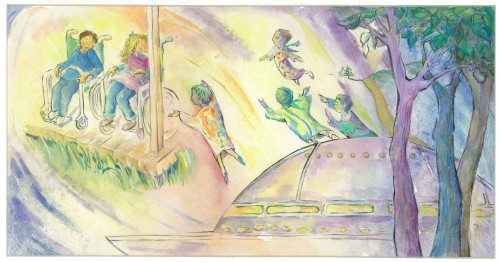
Where you working with Canada Sesame Street while creating these books?
Yes.
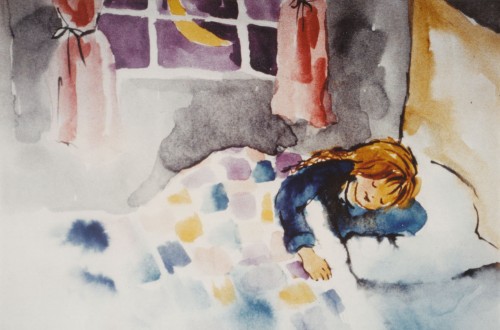
How many picture books have you illustrated?
I illustrated three picture books, two of which I wrote. I wrote a fourth book which I didn’t illustrate.
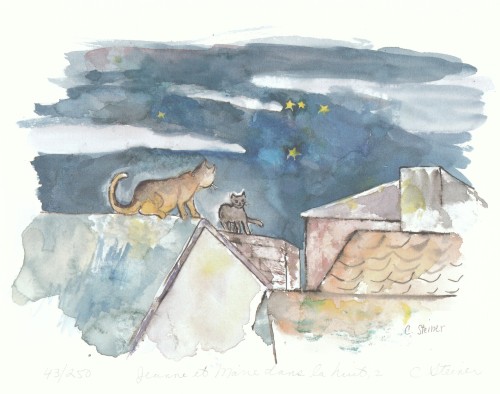
How did the publisher find you to illustrate IN OTHER WORDS?
I sent copies of my work to Annick Press in Toronto. Rick Wilks, the publisher, thought I might illustrate a manuscript then under discussion called “A Herd of Wild Bikes”. I’d already developed my first drawings when the publisher and author fell out of harmony. A few months later, I think, Rick Wilks sent me the manuscript, “In Other Words” by John C. Walker. It is a fantasy involving visitors from outer space and telepathic communication. A boy and girl with profound disabilities find a special connection in each other, and somehow attract the interest of well-meaning voyagers from another planet. It’s a story about friendship, finding meaning and delight in the world when much is closed off, and deciding what really matters.
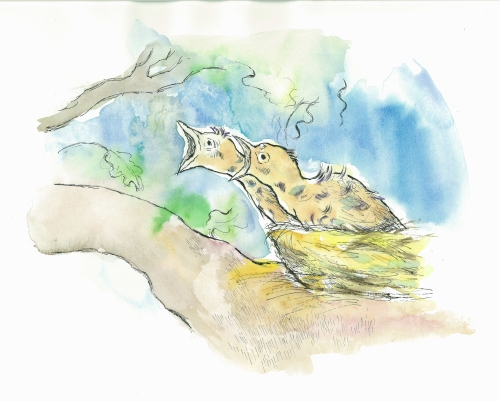
Then you wrote a chapter book titled, SHOES FOR AMELIE. What inspired that story?
By chance I read a book, “Lest Innocent Blood be Shed”, by Philip Hallie. It was a true and truly amazing account of a mostly Protestant region in France that became a safe haven for Jews during the Second World War. Approximately five thousand refugees, not only from within France but coming from across Europe, were sheltered there. No one, even now, knows exactly why the Germans didn’t crush it. They knew about it. There were several raids, one with fatal effects. Toward the end of the war, a convalescent house for wounded German soldiers operated directly across the street from a nest of Resistance fighters. But the inspiration behind the villagers’ and farmers’ courage came not from armed resistance but from the leadership of their pacifist minister. Andre Trocme guided his congregants from the pulpit, never spelling out instructions, to individually do the right thing. It helped that the area was remote, high, forested, and severe in winter. And the people, who throughout their history had suffered oppression and aided others in need, knew how to be quiet. None of the locals ever turned informer.
After seeing the documentary, “Weapons of the Spirit”, by Pierre Sauvage, I sensed a children’s book could be coaxed from these events. What would it be like, I wondered, to be a child, a boy about nine, whose mother brings a young guest into their tiny farmhouse – a girl perhaps eleven years old. You know she is being hidden, though no one told you and questions aren’t encouraged. How would you make sense of it? Through this wondering I came to write about Lucien and Amelie.
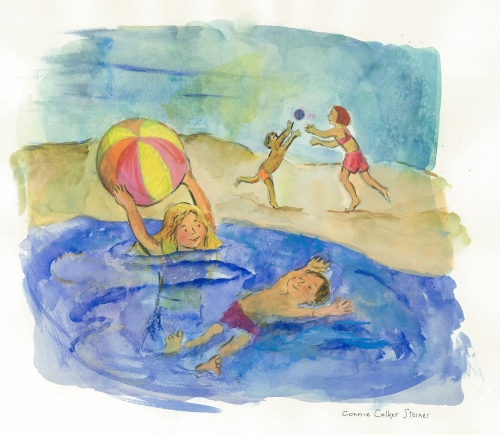
Have you ever won any awards?
“Shoes for Amelie” won the McNally Robinson Book for Young People Award, and was chosen as a Notable Children’s Book of Jewish Content by the American Jewish Library Association. It was shortlisted for the Geoffrey Bilson Award for Historical Fiction for Young People, and also shortlisted for the Canadian Library Association Book of the Year for Children. It was an Our Choice Book of the Canadian Children’s Book Centre in Toronto. “On Eagles’ Wings and Other Things” was also an Our Choice Book.
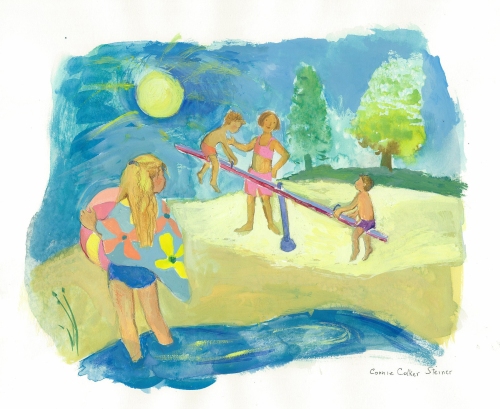
It looks like you write poems, too. Have any of those been published?
“The Little Artist”, along with my illustration, was published by Spider Magazine. “Night You Have Strict Orders” was in Cricket. The lyrics I wrote for Sesame Street began as poems on a page. I’m not sure if using them – there were fourteen – on TV counts as being published.

Have you done any illustrating for children’s magazines?
Only the one thing for Spider. So far.
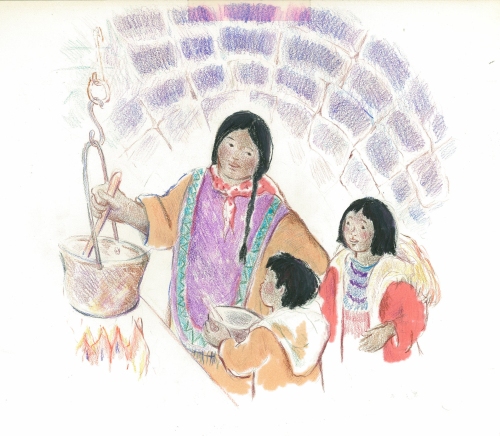
What is your favorite medium to use?
I usually work in transparent watercolor, often combined with ink, watercolor pencil, crayon. Sometimes I use gouache, meaning opaque watercolor, over the transparent paint. For Sesame Street I created cut-out collages in gouache.
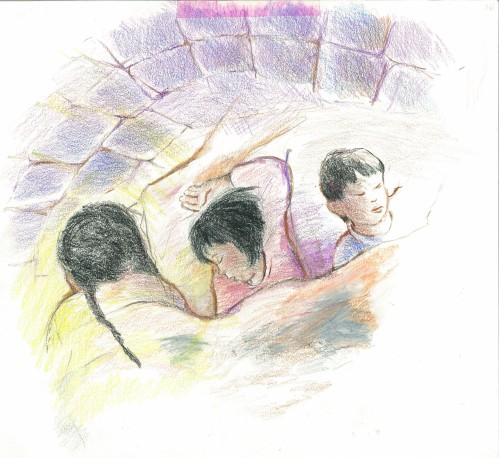
Has that changed over time?
I’m working with the same basic materials. But for each new project I bring a different emphasis, change the proportions, or introduce a new product or technique. For example, in “Song of an Inuit Child” (Sesame St.), I combined colored pencils (not soluble) with permanent felt-tip markers. Before that I had only used that kind of pencil for texture. I also incised the paper in places with the tip of a brush handle, leaving white line on the page when the pencil moves across the depression. Recently I discovered brush pens. They are permanent but have absolutely no odor, show up well under and over watercolor, and since there’s no dipping and dripping, can go anywhere.
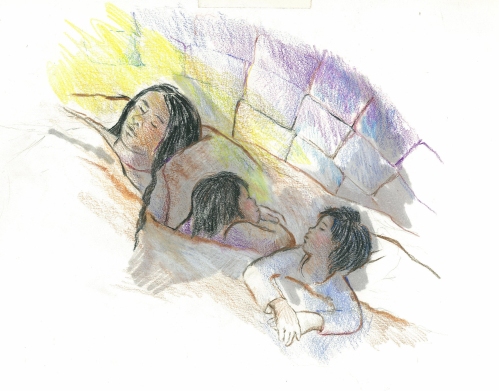
What is the one thing in your studio that you could not live without?
A medium to soft pencil. Without it I couldn’t begin.
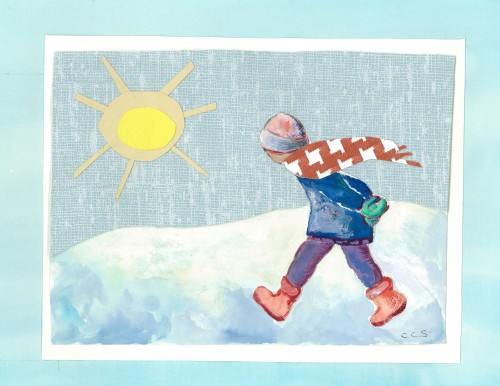
Do you try to spend a specific amount of time working on your craft?
I’m forever seeking to establish a predictable schedule, with variable results. But when I’m working on a book, either writing or illustrating, I’ll be at my table most weekdays for two stretches a day, each two to three hours. It might be mornings and late afternoons, or after lunch to about four and then again after dinner. Or some days I’m back and forth with the work all day. I take short breaks while working and try to get outside, so I don’t get stiff, either in my body or my work. At some time each day, a long walk is important, not only for exercise but to allow the mind to relax and appreciate sights, sounds, smells. This is also a time when creative work gets done in an effortless way, when solutions are found or ideas show up without my being aware I’m looking for them. Or they don’t. But as Leonard Cohen says, everybody knows….(in this case, that these are the things artists do when they’re working.)
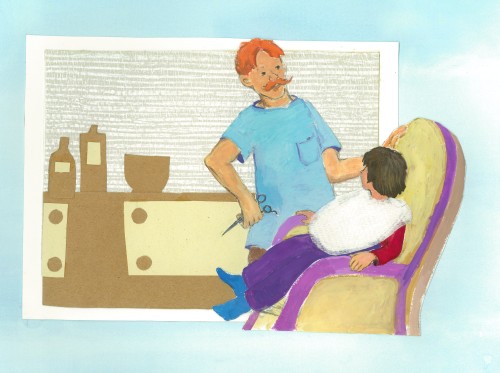
Are you open to illustrating a book that you haven’t written?
If it’s a book that I’m writing and hope to illustrate I would look for the kind of publisher that pays the author rather than the other way around. Even if it’s a long wait. Even if the publisher turns out to want another illustrator. Even if nothing happens for the book. I understand many people feel differently, especially now, with e-books and books issued inexpensively in very small editions. I value the editing, the distribution, especially to libraries, the opportunity to be reviewed and considered for awards, that regular publishing houses provide. Things are changing, I know, and I might not feel this way in the future. Even now, I remember you said self-publishing an e-book might make sense for an out-of-print book. It might.
But you were actually asking whether I would illustrate a self-publishing author’s book, not my own. It would depend…on my reactions to the manuscript, my rapport with the author, the terms under which I would be working. At any rate, I would be honored to be asked.
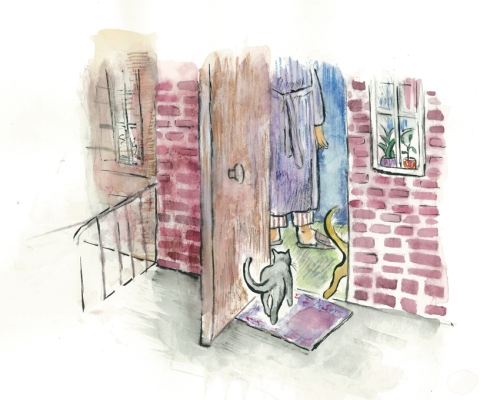
Do you take pictures or do any types of research before you start a project?
I love beginning an illustration project because of the research. It allows me to dream and draw my way into the characters, the place and the story. I go to libraries and talk to librarians. They are usually eager to help and have the competence to offer great suggestions. Today, images online are easily available. I’ll use the internet in addition to, not instead of, tangible books and flesh and blood librarians. And if possible, I like to observe real people, real animals, walk down actual streets and enjoy the challenge of translating a three dimensional world onto flat paper.
Most of the time you can do both. For “Eagles’ Wings”, my neighbors’ children playacted some of the scenes. My husband took photos as they held their positions, and I made sketches. Later I drew from the photos. I drew from photos in books and traveled to New York to draw from archives that couldn’t be moved from the museum that housed them. ( Nothing beat studying the real kids.) Then, I put it all aside. The pictures that appeared in my book were quick and spontaneous, the results of months of preparation.
For writing, which always comes first with me, it’s a similar process, except I’m reading and taking notes instead of drawing. Sometimes I’m talking with people, asking questions. I might be doing this after beginning the book, or long before I start, or both. A book like “Paul’s New Ears”, rooted in experiences with my family, required no research to write. Or you could say the research happened by itself, without my being aware of it. On the other hand, “Shoes for Amelie” took a great deal of research. I felt it was important to travel to Le Chambon in France where the story was set. Fortunately, I received grants from the Canada Council, the Manitoba Arts Council and the Jewish Foundation of Manitoba. The money took the sting out of travel expenses, but even more appreciated was the sense that my benefactors endorsed the project and had confidence I could follow through.
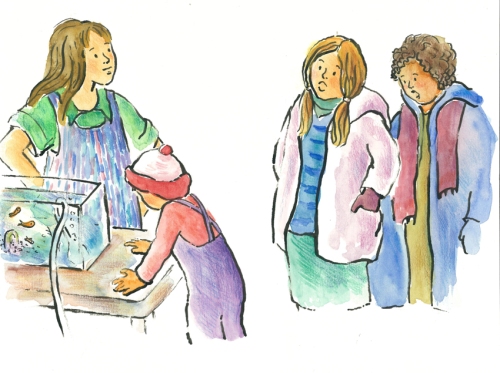
Do you think the Internet has opened doors for you?
The internet makes possible all the websites we enjoy, including the new one you developed for me. As for doors opening, we’ll have to see. It must also depend on how well artists adapt and make themselves available to opportunity.
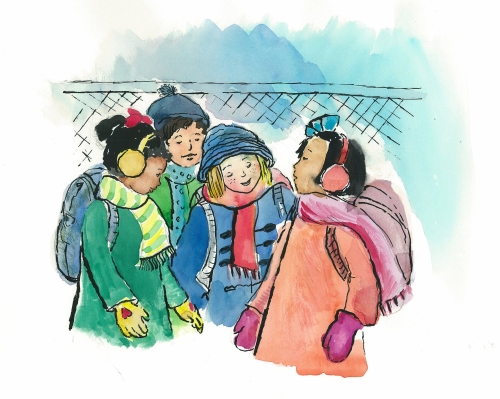
Do you use Photoshop with your illustrations?
No.

Do you have any career dreams that you want to fulfill?
Yes.
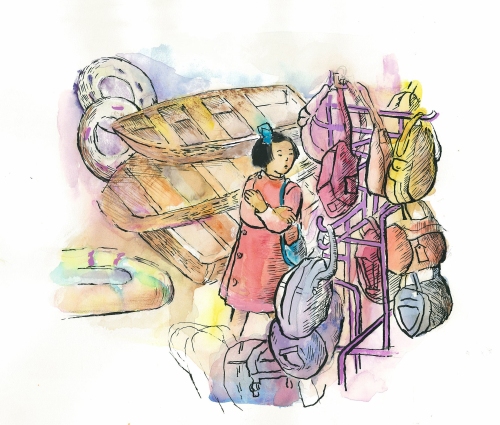
What are you working on now?
Two books are nearing the point of presentation. One is a middle grade chapter book featuring two cat detectives. The other is a picture book about the same Paul as in “Paul’s New Ears”. A third book is in the early stages. It takes one of the cat characters from the detective story and places her in an up-scale boarding school for gifted feline girls. Well, some of the girls go home after school but lots of them live there.
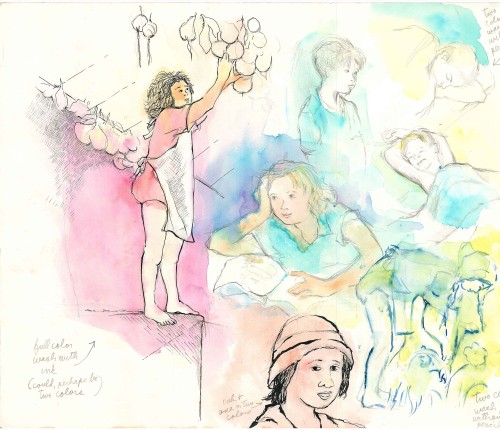
Do you have any material type tips you can share with us? Example: Paint or paper that you love – the best place to buy – a new product that you’ve tried – A how to tip, etc.
I like to try different ways of using watercolor and combining it with other media, as I mentioned in Questions 26 and 27. Derwent makes a watercolor pencil of unusual intensity, almost like ink. It’s called, not surprisingly, Inktense. Neocolor 1 is a color-rich, water resistant crayon that glides onto paper like butter. Neocolor 2 is the water soluble version. Both are products of Caran d’Ache, the company that makes the brush pens I love. Another fun way to draw is to use wide tongue depressors, split vertically in half. Dipped in India ink, they become expressive, economical pens. They draw lines of great variety in width, texture and value. If you teach children or adults, it’s a very freeing experience for them.
Here’s a how-to tip. A way to get confidence about drawing a figure when you can’t be looking at it, especially action figures, is to feel the motion in your own body. Convince yourself you can do it and draw with that conviction. Even if the figure looks strange, it will be interesting and carry the authority of coming from you. I know this sounds like Professor Harold Hill from “ The Music Man” teaching kids to play band instruments with the “think” system. Yes, he was a fraud, but didn’t they all play “Seventy-six Trombones” at the end?
Hobson Pittman, who was a great teacher, often said, “Exactness isn’t always the truth.” That is so even when you’re struggling to capture the figure in a Life Drawing class. And signing up for one of those classes is never a bad idea, as long as you’re in sync with the teacher’s ideas, or can learn to be. There are also groups that meet without a teacher.
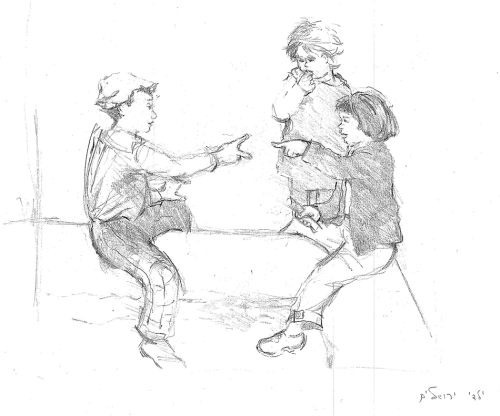
Any words of wisdom on how to become a successful writer or illustrator?
Find books on artists, children’s book artists but others, too, for whom you feel kinship, and immerse yourself in their work. See which artists inspired them. The same goes for writers if you’re a writer. And read, especially if you’re a writer. A critic once remarked of a certain Canadian prime minister’s wife who authored a memoir, that it appeared she’d written more books than she’d read. (She had written one book.) Read enough and, say what they will, they won’t say that.
Make sure you have wise, astute and supportive people in your corner, because there is usually lots of rejection, which can cause dejection. Dr. Seuss’s first book almost never saw the light of day, it had been turned down so many times. He picked up the manuscript at one of those publishers’ places and was walking away when, on the street, he bumped into a friend who worked in publishing. The friend took the manuscript from him, showed it to his employer, and that’s how the book came to be published. I don’t remember the details.
Try to carve out time and space to work regularly. But remember that some people can get a lot done on the wing, in fragmented bits of time, on a daily commute (though I hope not while driving), or in the midst of an active family.
Refresh yourself with nature and music. Take a challenging class with an inspiring teacher. Join SCBWI. Go to a SCBWI conference.
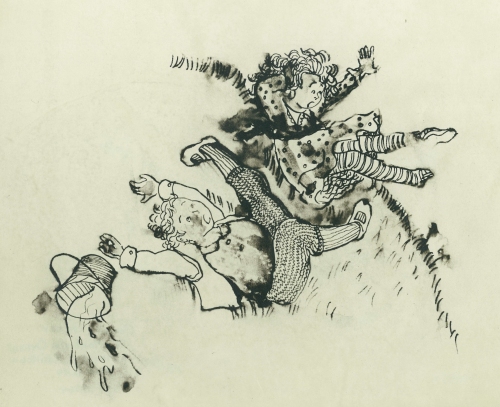
Thank you Connie for sharing your process, journey, and expertise with us. We look forward to hearing about your future successes.
To see more of Connie’s illustrations you can visit her at: http://www.conniesteiner.com/
Please take a minute to leave a comment for Connie, I know she would love to heard from you and I always appreciate it. Thanks!
Talk tomorrow,
Kathy
Filed under: Advice, authors and illustrators, awards, Illustrator's Saturday, inspiration, Interview, picture books, Process Tagged: Canadian Sesame Street, Connie Steiner, Pennsylvania Academy of the Fine Arts, Shoes for Amelie, University of Pennsylvania.



Love the diversity of your illustrative styles, Connie.
Ellen,
Thanks for leaving a comment. Hope you are enjoying the weekend and the beautiful weather.
Kathy